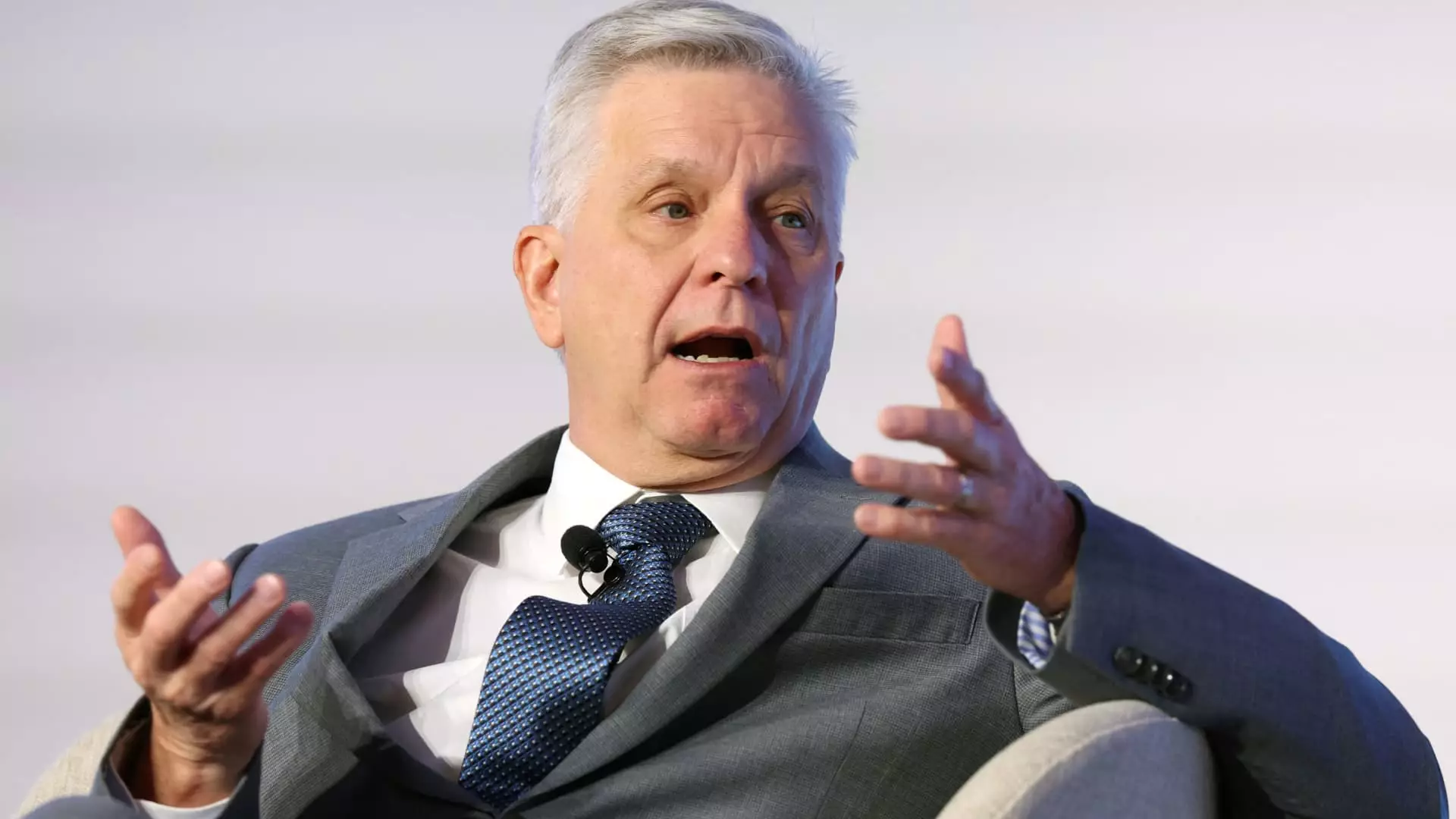The Federal Reserve is currently perched on a critical decision-making precipice, with the economic landscape shifting beneath its feet. Governor Christopher Waller’s recent statements have ignited a flicker of optimism among investors, proposing a potential interest rate cut as early as next month. Waller’s nuanced reading of the economic indicators suggests that inflation is no longer a pressing concern, urging the Fed to transition from its cautious stance to a more proactive, stimulative approach. This pivot reflects a growing sentiment that the labor market’s stability should not be taken for granted; readiness to act decisively could be the difference between economic revival and stagnation.
Waller’s assertion comes against the backdrop of an already established period of inactivity, with the Federal Open Market Committee (FOMC) voting unanimously to maintain interest rates steady over several meetings. Such an elongated pause can often lead to complacency, but one must question if it has served its full purpose or if persisting in this wait-and-see mode could create vulnerabilities. The national debt looms large at $36 trillion, a point repeatedly underscored by former President Donald Trump, who has echoed the urgent need for the Fed to slash rates significantly to curtail borrowing costs.
The Tug of War Between Policy and Politics
Trump’s public critique of the Fed and particularly Chair Jerome Powell has added a layer of complexity to the dialogue surrounding interest rates. His suggestion that rates should be decreased by as much as 2.5 percentage points reflects a desperation for a quick fix to igniting economic growth—a pressing agenda amid pre-electoral fervor. Yet, Waller’s approach of gradualism appears more tempered, advocating for a strategy that lowers rates cautiously enough to avoid unexpected shocks that can disrupt economic stability.
The challenge is twofold. On the one hand, the Fed must respond to political pressure while on the other, it must maintain a veil of independence that doesn’t bend to short-term influence. Waller’s balancing act must prioritize data-driven analysis over emotional impulses, validating his call to eschew quick fixes that may ultimately exacerbate economic volatility.
Thus far, the anticipated inflationary impacts from tariffs have been muted—a reality that Waller claims warrants a re-evaluation of current policies. The temptation is to place blame on external factors, like tariffs, as macroeconomic indicators remain tepid. However, one must ponder the question: What is the tipping point? When does a delay morph from prudence into negligence?
The Labor Market at the Crossroads
Waller has poignantly highlighted the growing concern regarding the labor market’s resilience, warning against waiting until signs of distress manifest before enacting changes in policy. This perspective is particularly relevant as businesses express anxiety over fluctuating consumer demand and potential slowdowns.
It’s critical to recognize that the job market serves as an economic bellwether; weakening labor market conditions could reverberate throughout the economy, inhibiting growth and quieting consumer confidence. In warning against inaction, Waller emphasizes a proactive approach—a stance that deserves attention. By moving too slow, the Fed risks enabling an environment where a labor crash could cascade into broader economic turmoil.
The argument that the Fed should prepare for rate cuts sooner rather than later hinges upon multiple factors—most notably the intricate interdependencies of consumer spending, employment, and overall economic confidence. The Fed’s unease is palpable, yet an immediate response could galvanize economic sectors feeling the heat of uncertainty.
Anticipating Economic Shifts
As Waller’s comments reverberate through the markets, stock futures responded positively—a reflection of the optimism that accompanies projected rate cuts. Yet, optimism must be tempered with vigilance as fluctuating economic conditions require continuous assessment. The “dot plot”—a graphical illustration of the Fed officials’ interest rate projections—illustrates the board’s uncertainty, revealing a diverse array of predictions among committee members.
If a consensus does emerge in favor of Waller’s view, it would be a bold step toward positioning the economy for future resilience. Even in an environment where immediate tariff impacts seem negligible, economic policymakers must remain agile and responsive to new data, as the feedback loop between monetary policy and fiscal realities can shift swiftly and unpredictably.
The path the Federal Reserve chooses could set the tone for the economy moving forward. Injustice lies in underestimating the significance of these decisions. Each meeting is a dance, composed of careful analytical assessment and the political reality of lending and borrowing costs in America’s economic narrative. With a tide of uncertainty pressing against it, the action—or inaction—of the Fed in the immediate future will prove crucial.

